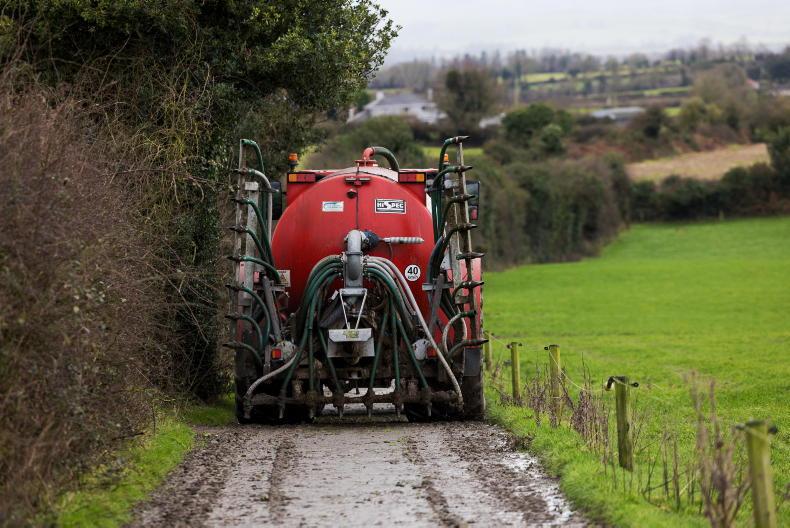Slurry
Many farmers took the opportunity to get slurry out over the last week. Those in Ulster and Leitrim have to wait until the end of the month before slurry is permitted to be spread.
In the main, ground conditions are good despite the heavy snow earlier in the month.
The storm due this weekend will set it back a bit, especially if it brings more snow with it. Avoid spreading slurry before heavy rain or snow as this increases the risk of run-off.
The forecast for next week is reasonably good, so there should be more opportunities to get slurry out over the next 10 days or so.
My view is that farmers should be tipping away with it over the course of the spring. All of the slurry doesn’t have to be spread at once, but spreading some slurry when conditions are good is sensible.
Some farmers got caught last year as they held off spreading slurry in January and February waiting for better responses in March and April. Then the weather turned very wet and they got caught out with full tanks and waterlogged land.
Trailing shoes, dribble bars and umbilical systems work better with more diluted slurry and the nitrogen response is better with diluted slurry also.
Grass growth
Is 2025 going to be a ‘normal’ year for grass growth or another poor year like the last four years? Most farmers have lost between 1t to 2t DM/ha of total grass growth on average over the last four years compared to the four years before that.
On Curtins Farm in Moorepark, they have grown around 11t DM/ha over the last four years, even on the higher nitrogen and grass only treatments, whereas growth rates were consistently in the 14t to 16t range for many years prior to that.
It’s the same story on many farms, and the impact is really obvious when discussion groups are meeting to talk about profit monitor data. Feed costs in 2024 were about twice what they were in 2021 between price and quantity used.
On a euro-per-kilo of milk solids (MS) basis, there is scope to reduce meal costs by at least €0.40/kg MS. Feeding 700kg of meal per cow costing €300/t works out at €0.45/kg MS if the cow delivers 470kg MS. Of course, 700kg of meal per cow is on the high side. With good grass quality and plenty of it farmers could easily get away with 500kg or 600kg if they go a few months during the summer when no meal is fed.
Back to grass growth, we need to be in the mindset that farms are going to grow well this year and that means they need to be primed with nitrogen, phosphorus and potash.
Soil samples need to be analysed and acted upon. Farmers are bemoaning the fact that they don’t have a P allowance, but some aren’t soil sampling annually to ensure that any changes in P are picked up early and therefore they regain an allowance.
We need to get the focus back to productivity and implement the practices that we know will deliver high grass growth. We can’t influence the weather and if growth rates are bad then we can react to that if that happens but the target must be to grow plenty of grass.






 This is a subscriber-only article
This is a subscriber-only article










SHARING OPTIONS: